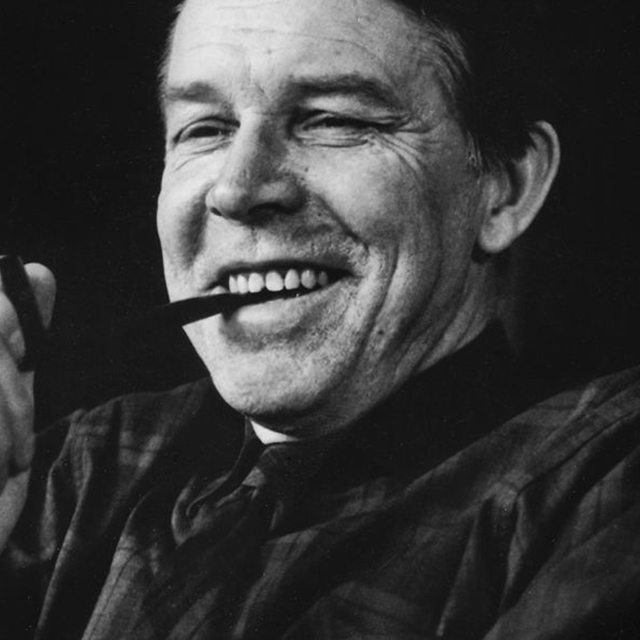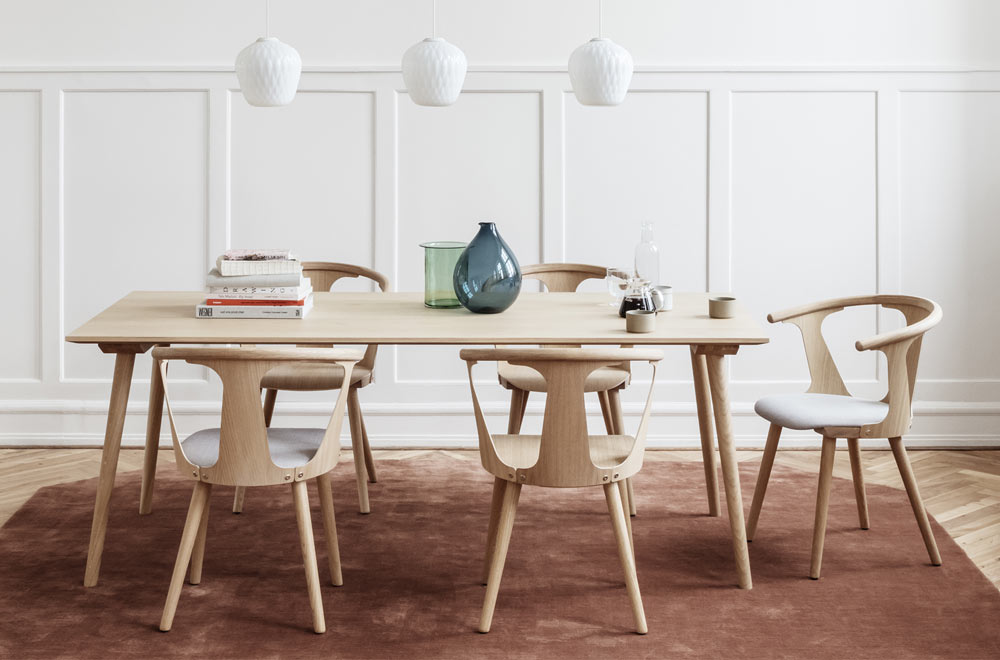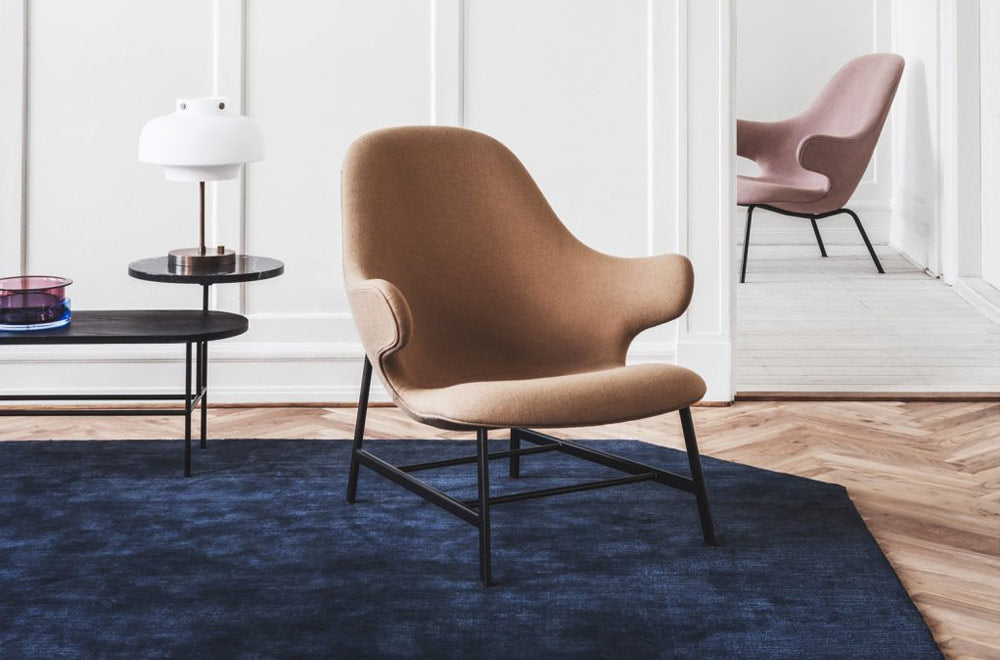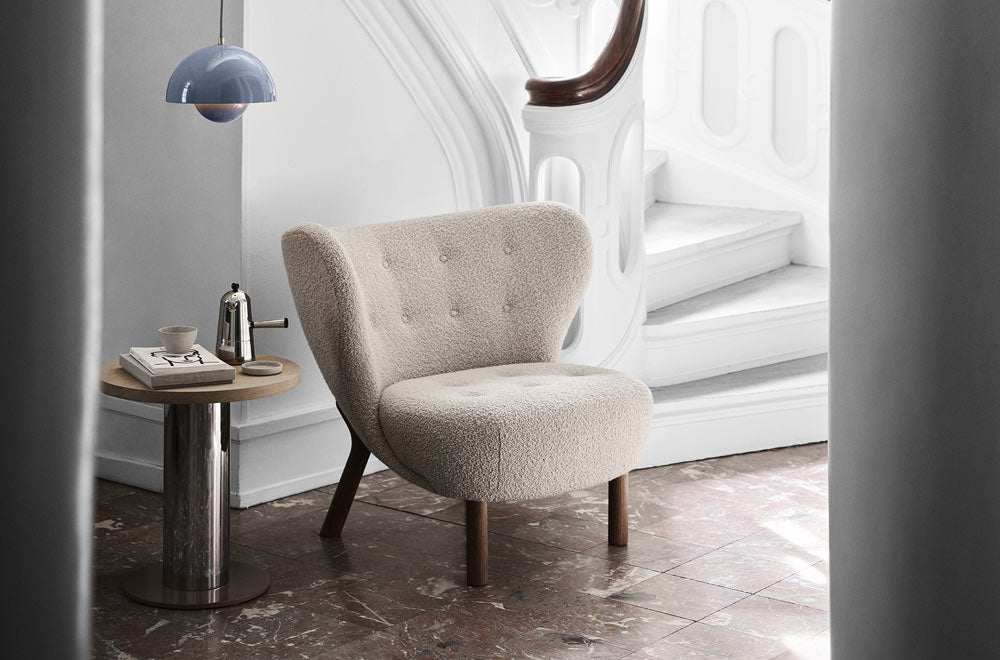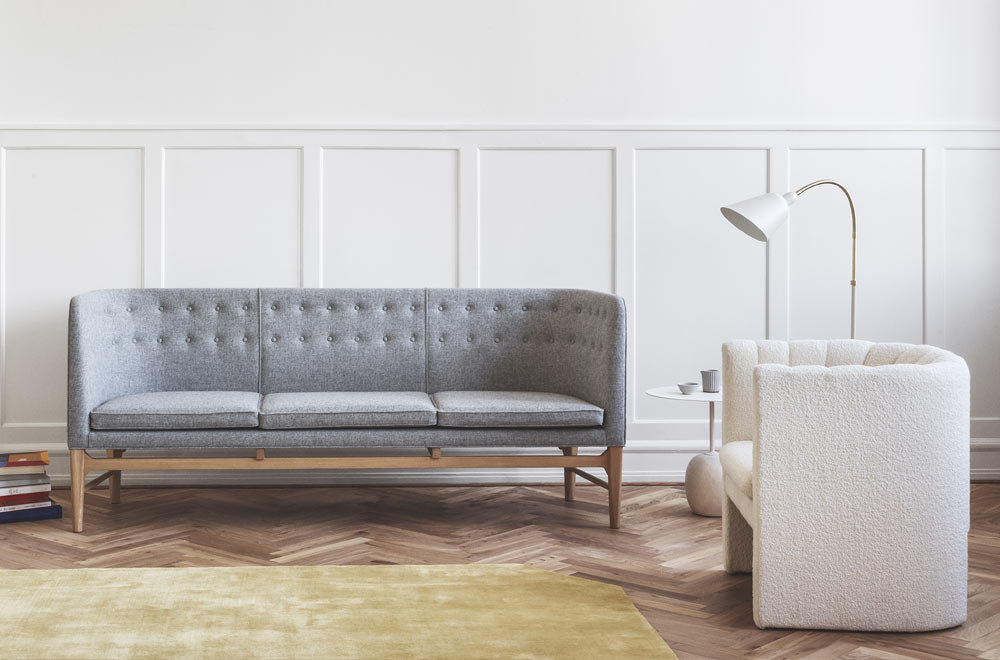Initially introduced back in 1938, Little Petra won instant praise at the Copenhagen Cabinetmakers Guild Exhibition, subsequently winning awards at exhibits in New York and Berlin. It’s one of just a few designs by architect Viggo Boesen, who became associated with Denmark’s signature design aesthetic in the 1930s called funkis style. Distinguished by a softer, more abundant, organic aesthetic that challenged the minimalistic approach of Bauhaus. Named after Boesen’s mother-in-law, Little Petra is indeed surprisingly petite, able to fit into all kinds of spaces, interiors and environments. Low to the ground, open and embracing, it embodies the essence of a lounge chair, allowing for all kinds of seating positions in any cosy setting imaginable. A lot of work has gone into ensuring the utmost comfort, from the seat to the upholstery. Respecting Boesen’s love of natural materials, the legs of the chair have been crafted in oak or walnut. The result is an endearing lounge chair that beckons you to stay.
H: 75cm/29.5in, D: 83cm/32.7in, L: 81cm/31.9in
Seat h: 40cm /15.7in, Seating d: 55cm/21.6in
Wood, CMHR foam, polyester wadding, fabric upholstery
Viggo Boesen is a relatively little known architect who contributed to Denmark’s signature design aesthetic in the 1930s. In particular, his work reflected Scandinavian ‘Funkis’ style, a Nordic take on Art Deco. In contrast to massproduced materials and the less-is-more approach from the Bauhaus school of thought, Boesen brought a soft, warm and almost naive aspect to design, ushering in new forms of upholstered furniture.
Only a few of his designs were ever produced, yet Boesen’s original ideas, organic shapes and expressive design lingo were precursors to Denmark’s subsequent stance on modernism in the decades that followed.






















